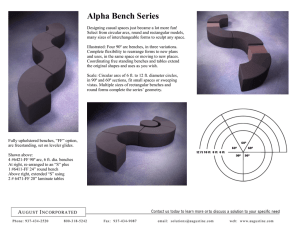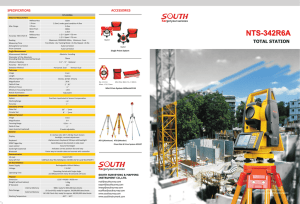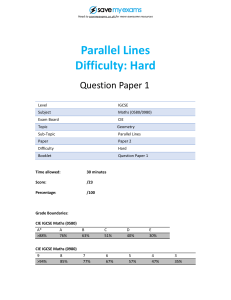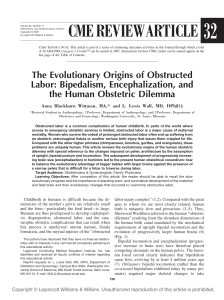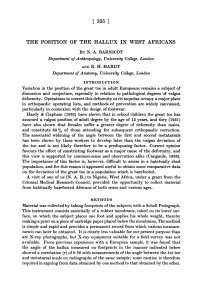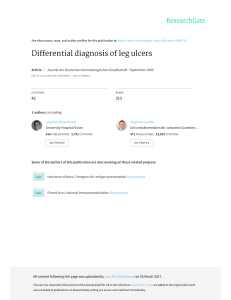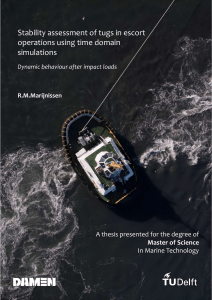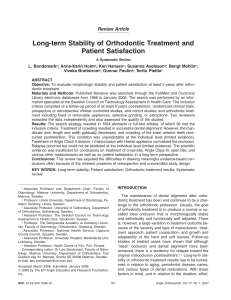PELVIS TO THIGH THIGH TO LOWER LEG LOWER LEG TO FOOT
Anuncio
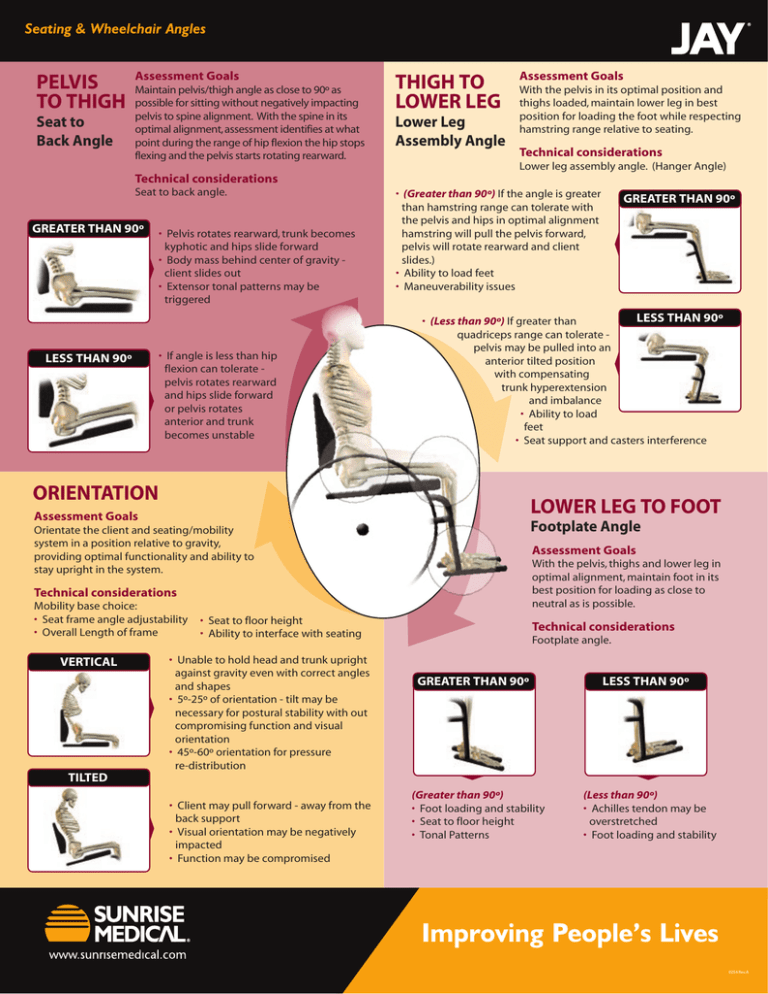
Seating & Wheelchair Angles PELVIS TO THIGH Seat to Back Angle Assessment Goals Maintain pelvis/thigh angle as close to 90º as possible for sitting without negatively impacting pelvis to spine alignment. With the spine in its optimal alignment, assessment identifies at what point during the range of hip flexion the hip stops flexing and the pelvis starts rotating rearward. THIGH TO LOWER LEG Lower Leg Assembly Angle Assessment Goals With the pelvis in its optimal position and thighs loaded, maintain lower leg in best position for loading the foot while respecting hamstring range relative to seating. Technical considerations Lower leg assembly angle. (Hanger Angle) Technical considerations Seat to back angle. GREATER THAN 90º LESS THAN 90º • Pelvis rotates rearward, trunk becomes kyphotic and hips slide forward • Body mass behind center of gravity client slides out • Extensor tonal patterns may be triggered • If angle is less than hip flexion can tolerate pelvis rotates rearward and hips slide forward or pelvis rotates anterior and trunk becomes unstable • (Greater than 90º) If the angle is greater than hamstring range can tolerate with the pelvis and hips in optimal alignment hamstring will pull the pelvis forward, pelvis will rotate rearward and client slides.) • Ability to load feet • Maneuverability issues LESS THAN 90º • (Less than 90º) If greater than quadriceps range can tolerate pelvis may be pulled into an anterior tilted position with compensating trunk hyperextension and imbalance • Ability to load feet • Seat support and casters interference ORIENTATION LOWER LEG TO FOOT Assessment Goals Footplate Angle Orientate the client and seating/mobility system in a position relative to gravity, providing optimal functionality and ability to stay upright in the system. Assessment Goals With the pelvis, thighs and lower leg in optimal alignment, maintain foot in its best position for loading as close to neutral as is possible. Technical considerations Mobility base choice: • Seat frame angle adjustability • Overall Length of frame VERTICAL TILTED GREATER THAN 90º • Seat to floor height • Ability to interface with seating • Unable to hold head and trunk upright against gravity even with correct angles and shapes • 5º-25º of orientation - tilt may be necessary for postural stability with out compromising function and visual orientation • 45º-60º orientation for pressure re-distribution • Client may pull forward - away from the back support • Visual orientation may be negatively impacted • Function may be compromised Technical considerations Footplate angle. GREATER THAN 90º (Greater than 90º) • Foot loading and stability • Seat to floor height • Tonal Patterns LESS THAN 90º (Less than 90º) • Achilles tendon may be overstretched • Foot loading and stability 0254 Rev.A

